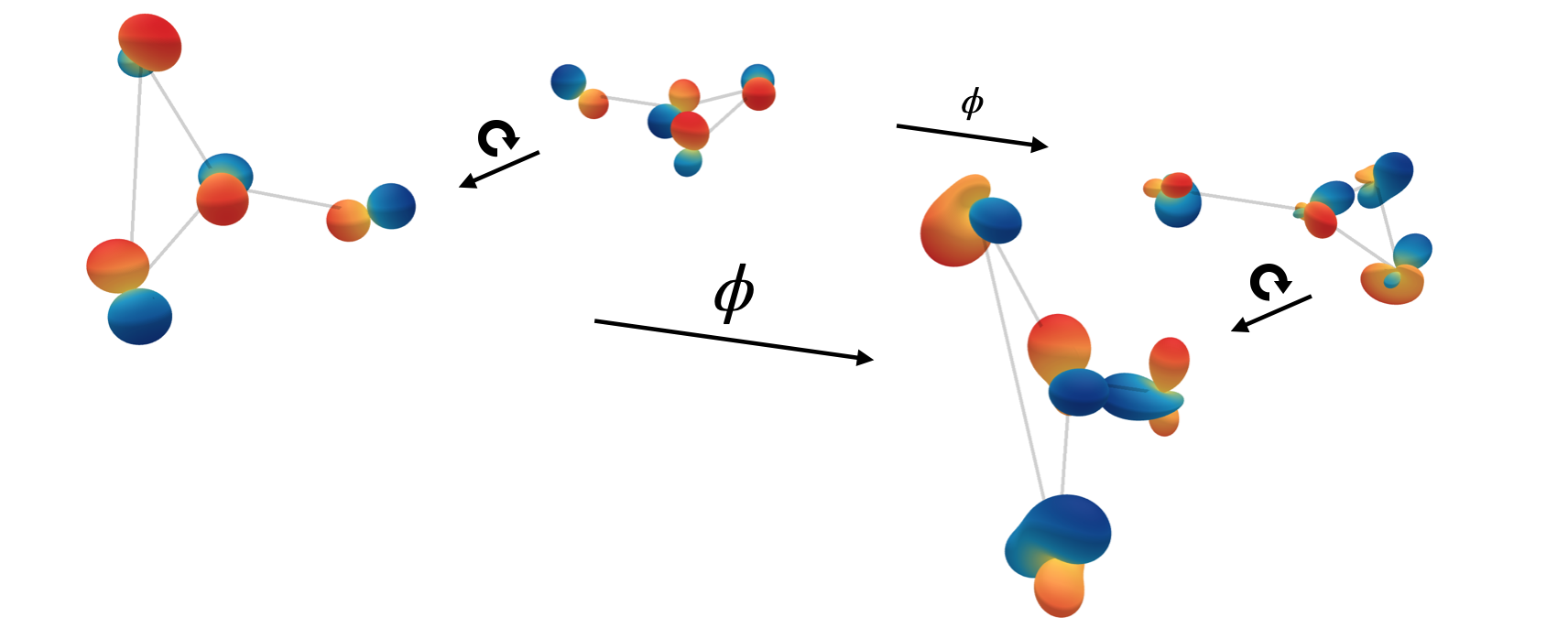This repo containst the code and experiments for the paper Geometric and Physical Quantities improve E(3) Equivariant Message Passing by Johannes Brandstetter, Rob Hesselink, Elise van der Pol, Erik Bekkers and Max Welling.
The codebase was created by Johannes Brandstetter, Rob Hesselink and Erik Bekkers. If you use this code in your work, please cite us:
@article{brandstetter2021geometric,
title={Geometric and Physical Quantities improve E(3) Equivariant Message Passing},
author={Johannes Brandstetter and Rob Hesselink and Elise van der Pol and Erik Bekkers and Max Welling},
year={2021},
eprint={2110.02905},
archivePrefix={arXiv},
primaryClass={cs.LG}
}We have also created an accompanying blog post.
This blog post contains additional material (Youtube videos, talks, ...) to help you dive further into the subject.
SEGNN is an E(3) steerable graph neural network. It can incorporate vector or tensor-valued information to send directional information, while remaining equivariant to E(3) transformations. We have tried to make the implementation general, so that you may easily apply SEGNN to your data.
The repository contains an exported conda environment (environment.yml), which you can use to install all dependencies.
Dependencies include:
This code allows for running three experiments mentioned in the paper:
- QM9: regression of 12 molecular properties
- Nbody (charged): Predicting particle trajectories of 5 particles under electrical force
- Nbody (gravity): Predicting particle trajectories of 100 particles under gravitational force
To recreate the datasets used in this work, navigate to nbody/dataset/ and run either
python3 -u generate_dataset.py --simulation=charged --num-train 10000 --seed 43 --suffix smallor
python3 -u generate_dataset.py --simulation=gravity --num-train 10000 --seed 43 --suffix smallTo run the QM9 experiments, adapt target, lmax_h, lmax_attr and radius.
python3 main.py --dataset=qm9 --epochs=1000 --target=alpha --radius=2 --model=segnn --lmax_h=2 --lmax_attr=3 --layers=7 --subspace_type=weightbalanced --norm=instance --batch_size=128 --gpu=1 --weight_decay=1e-8 --pool=avgTo run the SEGNN, use
python3 main.py --dataset=nbody --epochs=1000 --max_samples=3000 --model=segnn --lmax_h=1 --lmax_attr=1 --layers=4 --hidden_features=64 --subspace_type=weightbalanced --norm=none --batch_size=100 --gpu=1 --weight_decay=1e-12 To run the linear SEConv, use
python3 main.py --dataset=nbody --epochs=1000 --max_samples=3000 --model=seconv --lmax_h=1 --lmax_attr=1 --layers=4 --hidden_features=80 --subspace_type=weightbalanced --conv_type=linear --norm=instance --batch_size=100 --gpu=1 --weight_decay=1e-12 To run the non-linear SEConv, use
python3 main.py --dataset=nbody --epochs=1000 --max_samples=3000 --model=seconv --lmax_h=1 --lmax_attr=1 --layers=4 --hidden_features=64 --subspace_type=weightbalanced --conv_type=nonlinear --norm=instance --batch_size=100 --gpu=1 --weight_decay=1e-12 To run the SEGNN, use
python3 main.py --dataset=gravity --neighbours=6 --epochs=1000 --max_samples=10000 --model=segnn --lmax_h=1 --lmax_attr=1 --layers=4 --hidden_features=64 --subspace_type=weightbalanced --norm=none --batch_size=100 --gpu=1 --weight_decay=1e-12 For QM9, please run the following, using further model specifications. The warmup period allows for the warmup of CUDA kernels.
python3 time.py --warmup=50 --forward_passes=1000For the N-Body datasets, please run the previous commands with the flag --time_exp=yes


